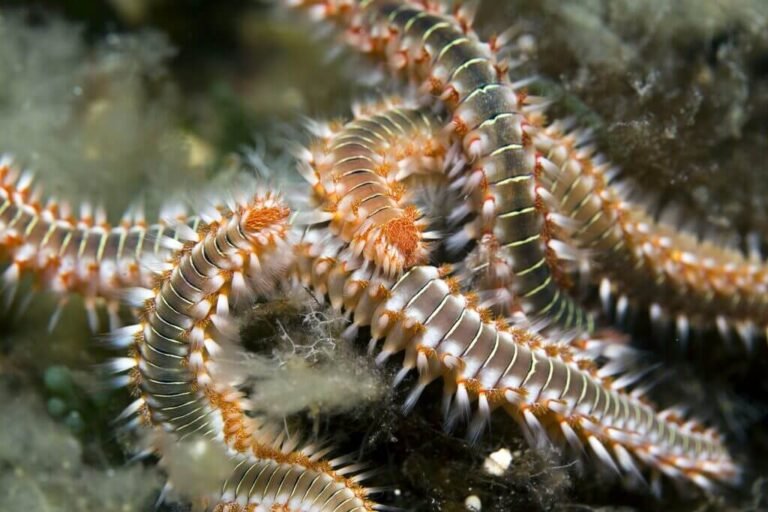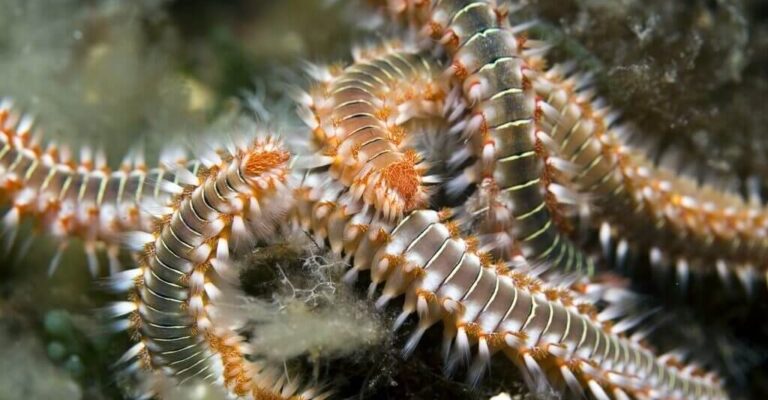
In home aquariums, bristle worms are often seen as beneficial scavengers, cleaning up leftover food and waste. However, it’s easy to wonder about their growth limits. Are they destined to stay small, or can they grow into something more substantial? Understanding their maximum size can help you manage your fish tank better and keep everything balanced. So, grab your favorite drink, and let’s explore the fascinating realm of bristle worms together!
What Are Bristle Worms?
Bristle worms are fascinating marine creatures belonging to the class Polychaeta. They’re often found in sandy or muddy substrates and are part of the natural cleanup crew in many aquatic environments. These worms have segmented bodies covered in tiny bristles that help them move through the water and sediment. You might be wondering, “What’s the big deal about these bristle-covered critters?” Well, they play a crucial role in the ecosystem by breaking down organic matter, which helps keep your tank clean.
Most bristle worms are harmless and can even be beneficial in a home aquarium. They munch on uneaten fish food, decaying plant material, and waste products, which helps maintain water quality. However, some species can reach larger sizes, which might raise a few eyebrows among aquarium enthusiasts. So, how big do these guys get? Let’s find out more!
Typical Sizes of Bristle Worms
Generally, bristle worms found in home aquariums range from about 2 to 10 inches in length. That’s roughly the size of a standard pencil to an average banana—pretty impressive for a worm, right? However, not all bristle worms are created equal. Some species, especially those in the **Eunice** genus, can grow much larger and can reach lengths of up to **14 inches or more**!
While most aquarium owners may not encounter these giants, it’s essential to keep an eye on the size of your bristle worms. Keeping your tank clean can help control their growth and maintain a healthy environment. Let’s break down some common examples:
- Common Bristle Worm (Hermodice carunculata): Typically reaches lengths of 3 to 6 inches.
- Fireworm (Eunice viridis): Can grow up to 10 inches in length.
- Giant Bristle Worm (Eunice spp.): Some species can exceed 14 inches, making them the true giants of the bristle worm world!
Factors Affecting Size Growth
You might be curious about what influences how large bristle worms can grow. Several factors play a role, including water quality, the availability of food, and the overall environment in your aquarium.
First off, **water quality** is vital. If your tank has clean, well-oxygenated water, your bristle worms can thrive and potentially grow larger. On the flip side, poor water conditions can stunt their growth.
Next is **food availability**. Bristle worms are opportunistic feeders. If there’s plenty of organic matter in your tank, they can find ample nourishment, encouraging growth. However, overfeeding your fish can lead to an excess of waste, giving bristle worms more to munch on than they need.
Lastly, the physical **environment** of your setup plays a crucial role as well. If your tank has plenty of hiding spots and a suitable substrate, bristle worms can feel safe and comfortable, prompting them to grow larger. However, if there’s not enough space or hiding places, their growth may be limited.
How to Control Bristle Worm Size
If you’re worried about your bristle worms getting too big, there are ways to manage their population and size. Here are some practical tips:
1. **Monitor Feeding**: Make sure you’re not overfeeding your fish. Just because they have a big appetite doesn’t mean their leftovers should turn into a feast for bristle worms!
2. **Regular Cleaning**: Keep your tank clean. Performing regular water changes and removing detritus from the substrate can help limit the food supply for these worms.
3. **Introduce Competitors**: Certain fish, like wrasses, love to snack on bristle worms. Having these natural predators in your tank can help keep their population in check.
4. **Manual Removal**: If you notice some of your bristle worms getting a bit too large for comfort, you might consider manually removing them. Just be cautious, as some species can bite if handled!
The Role of Bristle Worms in Your Aquarium
While it’s essential to keep an eye on their size, it’s also worth considering the benefits that bristle worms bring to your aquarium. As we’ve mentioned, they play an important role in **biodegradation**, helping break down waste and leftover food. This process helps maintain a healthy environment for your fish and other aquatic life.
Think of them as the recyclers of your aquarium. They’ll help convert organic matter into forms that can be used by other organisms and contribute to a balanced ecosystem. So, while size can be a concern, it’s crucial to find a balance that allows these helpful creatures to do their job without overwhelming your tank.
Bristle worms can be a bit of a mixed bag in the aquarium world. On one hand, their ability to clean up waste is invaluable, but on the other, their potential size can be a cause for concern. Typically ranging from 2 to 10 inches, they can surprise you with their growth, especially when conditions are right.
As you navigate the world of bristle worms in your home aquarium, remember that keeping things clean, feeding wisely, and monitoring their populations can help you create a thriving environment. The next time you spot one of these wiggly critters, you’ll have a better understanding of just how big they can grow and how to manage their presence. Embrace the balance—they’re here to help, after all!

